-
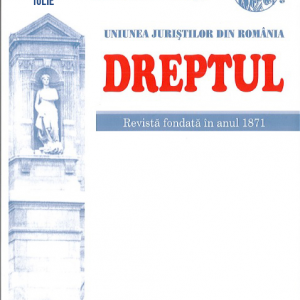 The existence of the law, of its validity are extremely important both for its knowledge, and for its application and compliance. By applying a general principle of law that nemo censetur ignorare legem, we consider that the publication and knowledge of law are essential conditions for not be subject to unpredictable legislative events, with all the consequences arising therefrom. To avoid such events, the law, in its broad or narrow sense, is subjected to certain rules of validity. Among them lies the determining of the moment when the law enters into force and the one the law comes in force.
The existence of the law, of its validity are extremely important both for its knowledge, and for its application and compliance. By applying a general principle of law that nemo censetur ignorare legem, we consider that the publication and knowledge of law are essential conditions for not be subject to unpredictable legislative events, with all the consequences arising therefrom. To avoid such events, the law, in its broad or narrow sense, is subjected to certain rules of validity. Among them lies the determining of the moment when the law enters into force and the one the law comes in force. -
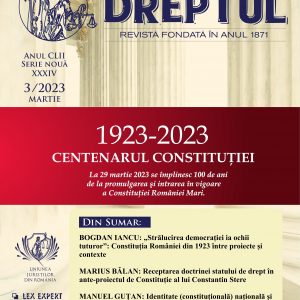
-
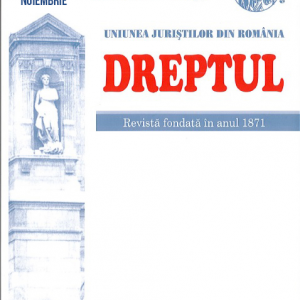 In this paper there are presented a number of aspects on a subject of great present interest: tax fraud. The theoretical approach of this contemporary scourge has been carried out starting from the identification of the factors which favour it and of the forms of operation, ending in the review of the measures for combating it and of the types of applicable sanctions.
In this paper there are presented a number of aspects on a subject of great present interest: tax fraud. The theoretical approach of this contemporary scourge has been carried out starting from the identification of the factors which favour it and of the forms of operation, ending in the review of the measures for combating it and of the types of applicable sanctions. -
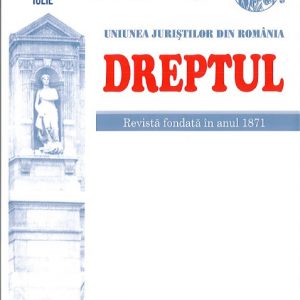 In this article, the author analyzes extensively the regulations contained in the new Civil Code and in the special legislation referring to the means of identification of the natural person. The author’s points of view rely on a rich speciality literature and on an extended judicial practice relevant for the identification of a person by civil means. Each attribute of identification of the person is discussed and presented in detail, so that the reader may obtain a complete information on the subjectmatters dealt with. When discussing the problems of identification of the natural person, the author also resorts to the conception of European law in the matter, reflected at the level of the Convention for the Protection of Human Rights and Fundamental Freedoms, also ratified by Romania, as well as of the ECHR case law on various aspects that are related to the private life of the persons and are relevant as attributes of their identification. Within the study, there are presented extensively the name and the domicile of the person established in the civil legislation as attributes of identification of the person.
In this article, the author analyzes extensively the regulations contained in the new Civil Code and in the special legislation referring to the means of identification of the natural person. The author’s points of view rely on a rich speciality literature and on an extended judicial practice relevant for the identification of a person by civil means. Each attribute of identification of the person is discussed and presented in detail, so that the reader may obtain a complete information on the subjectmatters dealt with. When discussing the problems of identification of the natural person, the author also resorts to the conception of European law in the matter, reflected at the level of the Convention for the Protection of Human Rights and Fundamental Freedoms, also ratified by Romania, as well as of the ECHR case law on various aspects that are related to the private life of the persons and are relevant as attributes of their identification. Within the study, there are presented extensively the name and the domicile of the person established in the civil legislation as attributes of identification of the person. -
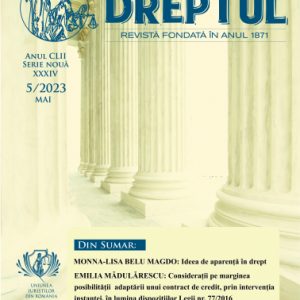
-
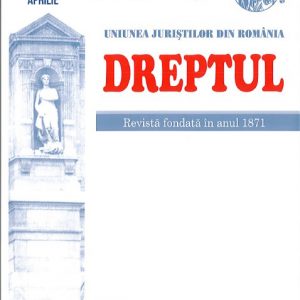 The new Fiscal Procedure Code, approved by the Law No 207/2015, in force starting from 1 January 2016, through the transposition of some European acts into our domestic law, has brought significant mutations in matters of administrative and fiscal disputes as well. In the ambience of the new normative framework regulated by the Law No 207/2015 on the Fiscal Procedure Code, this study aims at analyzing a few aspects less regulated by the new normative framework and which could create controversies both in the application of the new normative framework by the public tax authorities and by the administrative disputes courts entrusted with the settlement of some litigations in matters of administrative and fiscal disputes. Starting from this desideratum, the study analyzes the categories of judgments pronounced by the administrative courts in matters of fiscal and administrative disputes, as well as the procedure for their enforcement, in relation to each category of judgments pronounced in this matter. There are also analyzed within this study the problems of suspension of the enforcement and of the contestation against enforcement in matters of administrative and fiscal disputes.
The new Fiscal Procedure Code, approved by the Law No 207/2015, in force starting from 1 January 2016, through the transposition of some European acts into our domestic law, has brought significant mutations in matters of administrative and fiscal disputes as well. In the ambience of the new normative framework regulated by the Law No 207/2015 on the Fiscal Procedure Code, this study aims at analyzing a few aspects less regulated by the new normative framework and which could create controversies both in the application of the new normative framework by the public tax authorities and by the administrative disputes courts entrusted with the settlement of some litigations in matters of administrative and fiscal disputes. Starting from this desideratum, the study analyzes the categories of judgments pronounced by the administrative courts in matters of fiscal and administrative disputes, as well as the procedure for their enforcement, in relation to each category of judgments pronounced in this matter. There are also analyzed within this study the problems of suspension of the enforcement and of the contestation against enforcement in matters of administrative and fiscal disputes. -
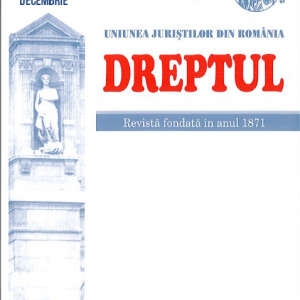 Court Judgments for complaints against prosecutor’s not to indict resolutions and ordinances under par. (10) of art. 2781 of the Code of Criminal Procedure are final upon the delivery date thereof. Remaining final upon the date of pronouncing thereof, judgments may not be appealed through ordinary remedies at law. In this article the author analyzes the situation where, if the party was improperly or legally summoned, unable to appear before or to warn the court about such circumstances, it may file an appeal for annulment, extraordinary remedy at law, but which is directed only against judgments pronounced under appeal according to art. 386 of the Code of Criminal Procedure.
Court Judgments for complaints against prosecutor’s not to indict resolutions and ordinances under par. (10) of art. 2781 of the Code of Criminal Procedure are final upon the delivery date thereof. Remaining final upon the date of pronouncing thereof, judgments may not be appealed through ordinary remedies at law. In this article the author analyzes the situation where, if the party was improperly or legally summoned, unable to appear before or to warn the court about such circumstances, it may file an appeal for annulment, extraordinary remedy at law, but which is directed only against judgments pronounced under appeal according to art. 386 of the Code of Criminal Procedure. -
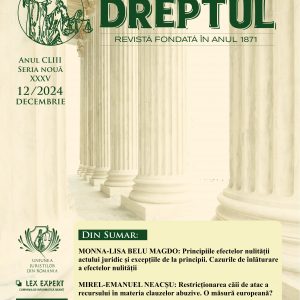
-
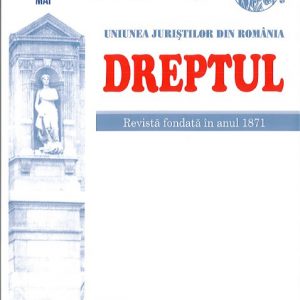 Scurte observații privind istoricul cauzei. La data de 15 iulie 2013, Comitetul cetățenilor constituit pentru promovarea inițiativei cetățenești (în continuare Organizatorii) a prezentat Comisiei Europene propunerea de inițiativă cetățenească europeană1 (în continuare ICE), intitulată „Minority SafePack – one million signatures for diversity in Europe”, ce avea ca obiect invitarea Comisiei de a adopta acte la nivelul UE (regulamente, directive, decizii individuale, recomandări), având drept scop „îmbunătățirea protejării drepturilor persoanelor
Scurte observații privind istoricul cauzei. La data de 15 iulie 2013, Comitetul cetățenilor constituit pentru promovarea inițiativei cetățenești (în continuare Organizatorii) a prezentat Comisiei Europene propunerea de inițiativă cetățenească europeană1 (în continuare ICE), intitulată „Minority SafePack – one million signatures for diversity in Europe”, ce avea ca obiect invitarea Comisiei de a adopta acte la nivelul UE (regulamente, directive, decizii individuale, recomandări), având drept scop „îmbunătățirea protejării drepturilor persoanelor -
 HOTÃRÂREA NR. 1 privind aprobarea RAPORTULUI DE ACTIVITATE AL CONSILIULUI U.N.B.R. (între Congresul avocaţilor 2009 şi Congresul avocaţilor 2010) Congresul Avocaţilor întrunit la 17 iunie 2010 în localitatea Mamaia, jud. Constanţa, constituit în conformitate cu dispoziţiilor art. 59 alin. (1) din Legea nr. 51/1995 pentru organizarea şi exercitarea profesiei de avocat, vãzând dispoziţiile art. 61 alin. (1) lit. a) din Legea nr. 51/1995 pentru organizarea şi exercitarea profesiei de avocat, dupã analiza şi dezbaterea Raportului de activitate al Consiliului U.N.B.R. (între Congresul avocaţilor 2009 şi Congresul avocaţilor 2010) astfel cum acesta a fost supus dezbaterii Corpului profesional al avocaţilor, începând cu data de 07 iunie 2010, afişat pe website-ul (www.unbr.ro), comunicat prin poşta electronicã la toate barourile şi, prin grija acestora, comunicat membrilor Congresului în forma prevãzutã de art. 14 alin. (5) din Regulamentul de organizare şi funcţionare a U.N.B.R. şi de desfãşurare a şedinţelor Consiliului U.N.B.R.,
HOTÃRÂREA NR. 1 privind aprobarea RAPORTULUI DE ACTIVITATE AL CONSILIULUI U.N.B.R. (între Congresul avocaţilor 2009 şi Congresul avocaţilor 2010) Congresul Avocaţilor întrunit la 17 iunie 2010 în localitatea Mamaia, jud. Constanţa, constituit în conformitate cu dispoziţiilor art. 59 alin. (1) din Legea nr. 51/1995 pentru organizarea şi exercitarea profesiei de avocat, vãzând dispoziţiile art. 61 alin. (1) lit. a) din Legea nr. 51/1995 pentru organizarea şi exercitarea profesiei de avocat, dupã analiza şi dezbaterea Raportului de activitate al Consiliului U.N.B.R. (între Congresul avocaţilor 2009 şi Congresul avocaţilor 2010) astfel cum acesta a fost supus dezbaterii Corpului profesional al avocaţilor, începând cu data de 07 iunie 2010, afişat pe website-ul (www.unbr.ro), comunicat prin poşta electronicã la toate barourile şi, prin grija acestora, comunicat membrilor Congresului în forma prevãzutã de art. 14 alin. (5) din Regulamentul de organizare şi funcţionare a U.N.B.R. şi de desfãşurare a şedinţelor Consiliului U.N.B.R., -
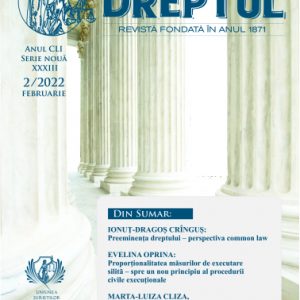 Enforcement in kind of the obligation to do resulting from a synallagmatic promise to contract cannot be enforced in kind, a situation which determined the legislator to identify a substitute means to replace the actual enforcement and to produce the desired effects in the patrimony of the contracting parties. The present study aims to analyze the substitute remedy of the judgment replacing the contract from the perspective of the local judge, who is facing in the process of solving such requests with a series of specific procedural and substantial impediments. Aspects such as the legal nature of the obligation to enforce, the prescription of the substantive right to action, the referral to the arbitral tribunal, the legal nature of the action filed, the modality of designing the operative part of the judgment and others similar are key points of the study, and their analysis tries to determine such an understanding from the courts of law of this specific and special mechanism among the contractual remedies.
Enforcement in kind of the obligation to do resulting from a synallagmatic promise to contract cannot be enforced in kind, a situation which determined the legislator to identify a substitute means to replace the actual enforcement and to produce the desired effects in the patrimony of the contracting parties. The present study aims to analyze the substitute remedy of the judgment replacing the contract from the perspective of the local judge, who is facing in the process of solving such requests with a series of specific procedural and substantial impediments. Aspects such as the legal nature of the obligation to enforce, the prescription of the substantive right to action, the referral to the arbitral tribunal, the legal nature of the action filed, the modality of designing the operative part of the judgment and others similar are key points of the study, and their analysis tries to determine such an understanding from the courts of law of this specific and special mechanism among the contractual remedies. -
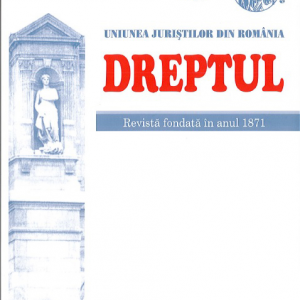 The study below is consecrated to the new procedural regulations regarding the arbitral award. In the first part of the study the author specifies the decisive part of the autonomy of the will in establishing the rules applicable to the arbitration, especially to ad-hoc arbitration. The determination of all procedural rules by arbitrators, in case of ad hoc arbitration, is often difficult. That is why, on the side, respectively in so far as the parties have not established the applicable rules, and those enacted in Book IV of the new Civil Procedure Code are not covering, the author defends the necessity of the access to common law. An emphatic criticism shall be brought to the provisions of art. 594 paragraph 2 of the new Civil Procedure Code, the text requiring the exposure of the arbitral award, comprising provisions on the transfer of the ownership right or the granting of another real right to the law court or to the notary public in order to obtain, as the case may be, the vesting with the „writ of execution” or an „authentic notarial deed”. The author’s undertaking is focused on the arbitral award, on its content, as well as on the grounds legitimating the exercise of the action for annulment. He considers the action for annulment to be a specific procedural way of abrogating an arbitral award. Interesting considerations are formulated also in relation to the proposal of consecrating the remedy at law of the recourse against the judgment passed by the competent court of appeal. The solution is proposed in the Draft Law for the enforcement of the new Civil Procedure Code.
The study below is consecrated to the new procedural regulations regarding the arbitral award. In the first part of the study the author specifies the decisive part of the autonomy of the will in establishing the rules applicable to the arbitration, especially to ad-hoc arbitration. The determination of all procedural rules by arbitrators, in case of ad hoc arbitration, is often difficult. That is why, on the side, respectively in so far as the parties have not established the applicable rules, and those enacted in Book IV of the new Civil Procedure Code are not covering, the author defends the necessity of the access to common law. An emphatic criticism shall be brought to the provisions of art. 594 paragraph 2 of the new Civil Procedure Code, the text requiring the exposure of the arbitral award, comprising provisions on the transfer of the ownership right or the granting of another real right to the law court or to the notary public in order to obtain, as the case may be, the vesting with the „writ of execution” or an „authentic notarial deed”. The author’s undertaking is focused on the arbitral award, on its content, as well as on the grounds legitimating the exercise of the action for annulment. He considers the action for annulment to be a specific procedural way of abrogating an arbitral award. Interesting considerations are formulated also in relation to the proposal of consecrating the remedy at law of the recourse against the judgment passed by the competent court of appeal. The solution is proposed in the Draft Law for the enforcement of the new Civil Procedure Code.
